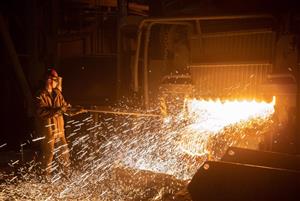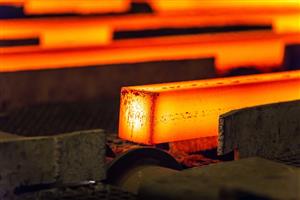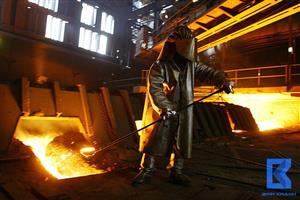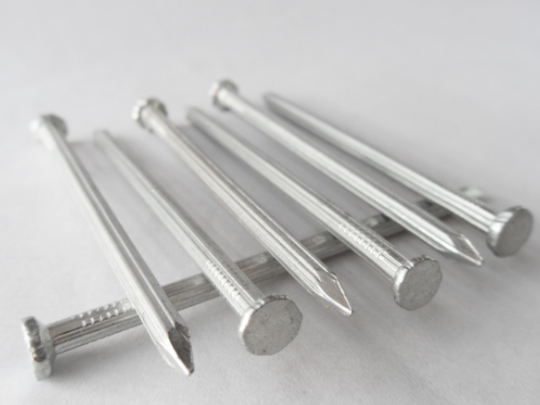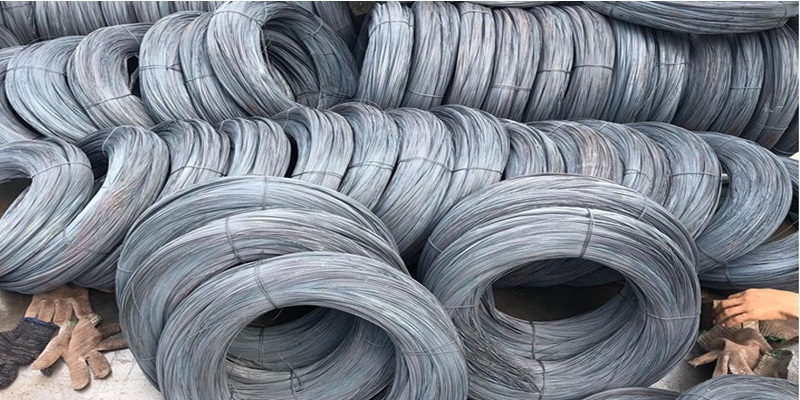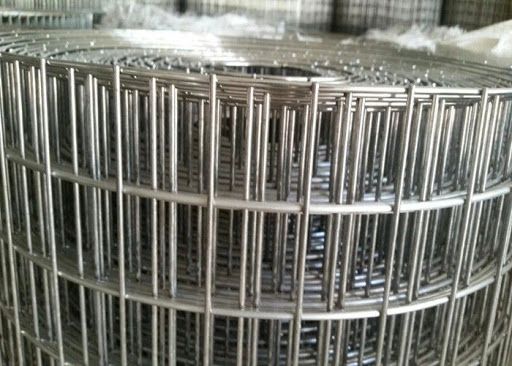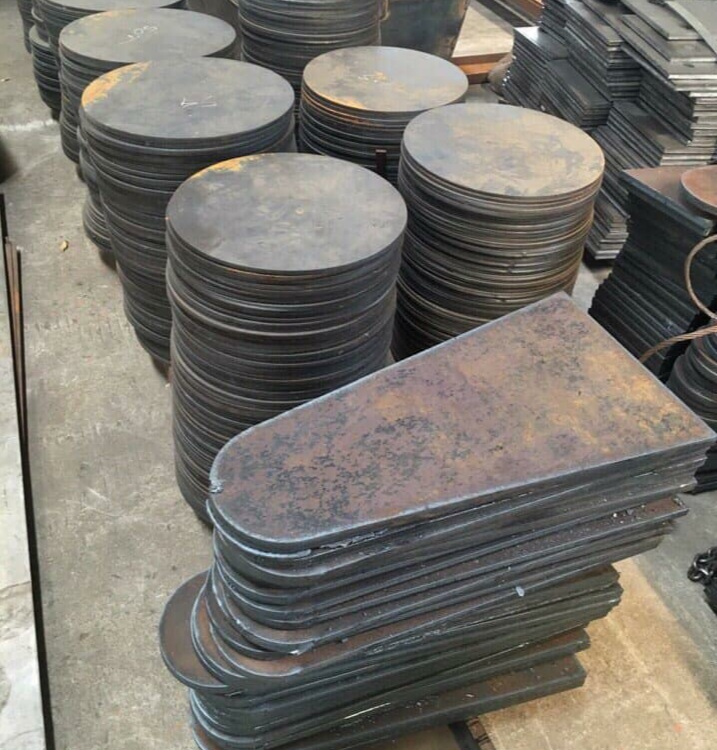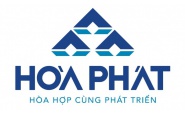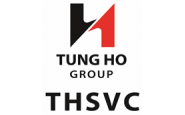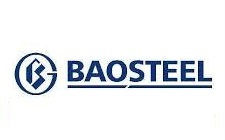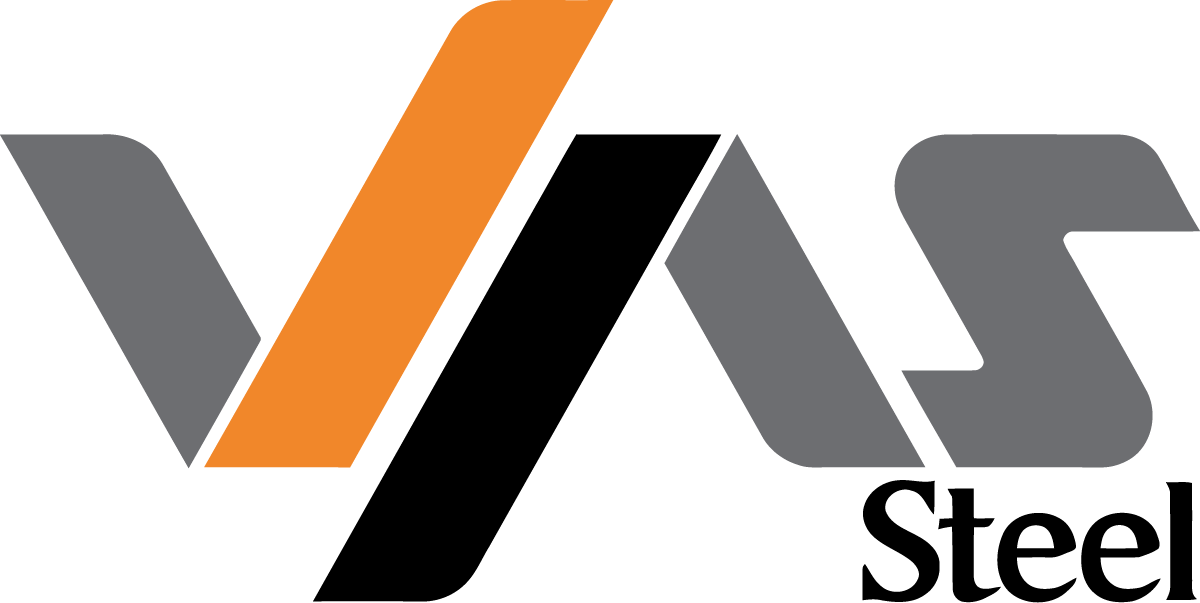Construction steel consumption still declines
In September, construction steel production began to show signs of recovery when output increased by 12% compared to August to nearly 1.1 million tons. Compared to the same period last year, this figure is 47.2% higher. However, sales fell 21% from August to 920,248 tonnes, according to data from the Vietnam Steel Association (VSA).
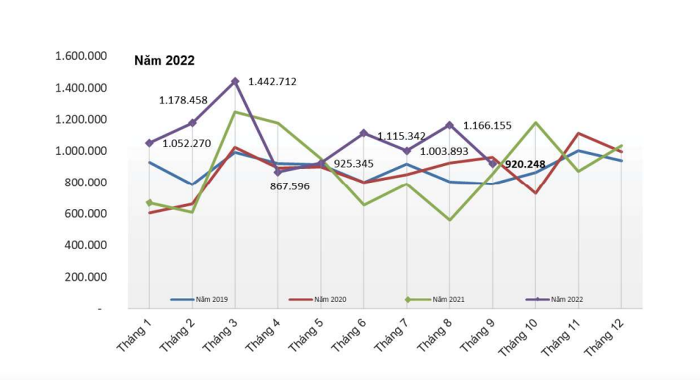
Sales of construction steel in the period of 2019 - September 2022. (Source: VSA)
From the end of August, the factories removed the price guarantee policy and slightly raised the selling price in early September. At this time, the domestic construction steel market started to prosper, merchants and shops had begun to improve. started hoarding inventories that were already at very low levels.
Construction steel price in September experienced 3 consecutive increases to about 15.2 - 15.6 million VND/ton.
However, the actual domestic demand for steel remained low and exports decreased due to higher prices in the region. Accordingly, construction steel exports in September decreased by 48% over the same period last year to 113,158 tons. These factors caused the total steel sales in September to decrease compared to August.
"Factories are all facing difficulties due to high inventories and facing monthly losses. Meanwhile, traders have reduced their purchases because they are afraid that prices may fall further," VSA said. determined.
Currently, there have been a few steel companies announcing business results in the third quarter, including one that reported a record loss.
According to the third quarter financial report of Vicasa Steel JSC - VNSteel (Code: VCA), the company's net revenue decreased by nearly 18% to 477 billion dong.
During the period, the company did business at below cost, so the gross loss was nearly 10 billion dong, while the same period had a profit of nearly 12 billion dong. Excluding expenses, Vicasa lost nearly 22 billion dong after tax in the third quarter, and nearly 2 billion dong in the same period last year. This is the company's heaviest quarterly loss since listing (2010).
Enterprises said that due to the influence of the Russia-Ukraine conflict, China's Zero COVID-19 policy, and global inflation, have affected the domestic steel and construction industry. Besides, the policy of tightening credit room for the real estate sector reduces the demand for steel.
Compared to the third quarter of 2021, Vicasa's product sales volume was very small, prices fell sharply, and inventory prices were high, which reduced gross profit by 21.62 billion dong.
Besides, the increase in financial expenses due to slow movement of goods and increased loan interest affected the company's third quarter results.
The third quarter consolidated financial statements of Thai Nguyen Iron and Steel Joint Stock Company (Tisco - Code: TIS) also showed that net revenue decreased by more than 15% over the same period to 2,604 billion dong. Enterprises said that in the quarter, consumption volume decreased by 21,895 tons, equivalent to 11.4% decrease compared to the third quarter of last year.
The cost of capital is at 2,559 billion dong, so the company's gross profit is more than 44 billion dong. Gross profit margin decreased by 4.3 percentage points compared to III/2021 to 1.7%.
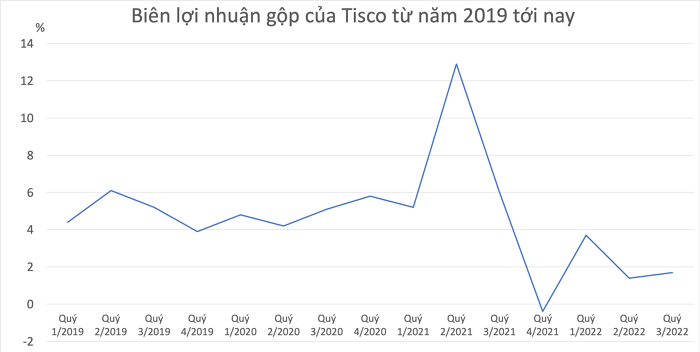
Data: Tisco's financial statements (collected in the US)
Tisco recorded a loss after tax of 25 billion dong compared to the profit after tax of nearly 10 billion dong in the third quarter of last year. Generally in 9 months, the company's profit after tax is nearly 8 billion dong, down 93% compared to the same period last year.
For giant Hoa Phat, construction steel sales in September recorded 318,000 tons (equivalent to 35.8% market share), down 3% compared to the same period last year. Hoa Phat said that the low general market demand combined with complicated rainstorms made the consumption of construction steel difficult.
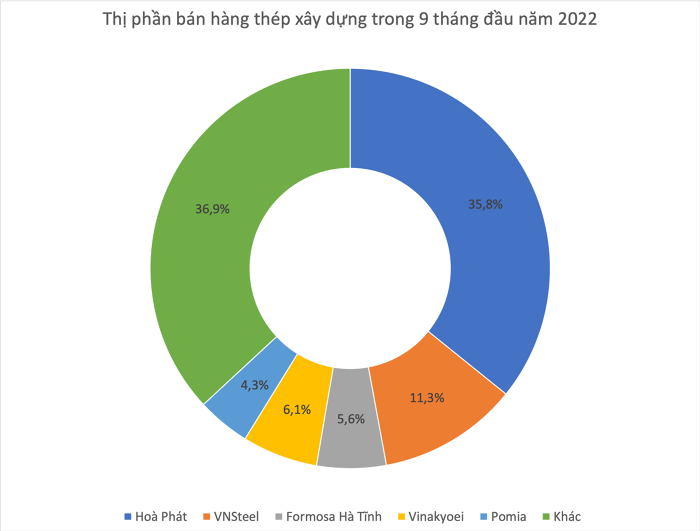
Số liệu: VSA (H.Mĩ tổng hợp)
Some companies have had to cut staff and halt some blast furnaces to cut production costs. According to the page Securities Investment, Pomina Joint Stock Company (Code: POM) announced the termination of labor contracts for some employees due to the suspension of blast furnace production from September 23.
The reason is that difficulties have piled up when the consequences of the epidemic have not been overcome, the continuation of the conflict has pushed up oil prices and commodity prices, especially the price of input materials for production. has increased.
Meanwhile, the value of steel products and billet decreased continuously. In the context of the global economic recession with a serious level, the factory had to struggle to cope with the crisis and economic recession, so it had to suspend operations.
According to the audited report, the net revenue of the first 6 months of Pomina Steel reached VND 8,105 billion, down 48 billion compared to the previous independent report. Gross profit is 348 billion, gross profit margin is 4.2%.
Deducting expenses, Pomina Steel suffered a loss of 23 billion dong, while according to its self-contained report, its profit after tax was 8 billion dong.
Nghiem Xuan Da, Chairman of VSA, said that whether the demand in the fourth quarter can increase or not still depends on many factors, especially when inventories are still high, manufacturers need time to process.
“After August, demand may recover a bit but remain in a tug of war. However, it is not yet possible to expect the market to recover strongly in the fourth quarter because of many uncertain factors, especially when the credit room for the real estate industry is tight. Even if the credit room is loosened, it will take time to gain momentum. If there is, the demand can only gradually increase again," Mr. Da said.
Flat steel plate pressure will decrease in the fourth quarter?
In addition to construction steel, consumption of some other steel products belonging to the flat steel group in September also recorded a decrease compared to the same period last year.
Accordingly, sales of color coated metal plated steel dropped 41.6% to 299,326 tons. In which, exports reached 104,494 tons, a sharp decrease of 72.4% over the same period.
In the first 9 months of this year, the export volume of this product decreased by 33% to 1.6 million tons (accounting for 50% of total consumption).
In addition, the situation of port jams and high shipping rates also greatly affected the export activities of steel enterprises in general in recent years.
Talking to us, Mr. Nguyen Tan Hoa, Deputy General Director of Supply at Hoa Sen Group said, “The difficulty of the broken supply chain leads to logistics problems becoming more difficult. Especially at European and American ports, congestion is still happening. We have been looking for ways to be able to export.”

Mr. Nguyen Tan Hoa, Deputy General Director of Supply of Hoa Sen Group Joint Stock Company (Photo: H.My)
In the first 9 months of the year, Hoa Sen sold 941,517 tons of galvanized steel, down 33% compared to the same period last year. However, the company is still leading the market share of this product with 29.1%.
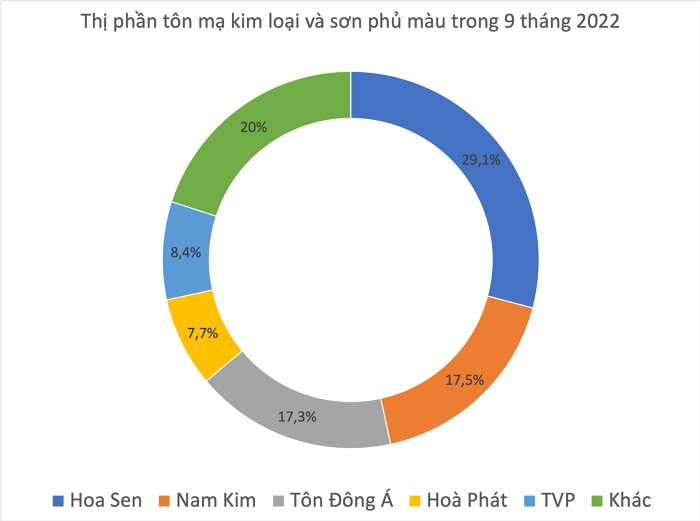
Data: VSA (collected by US)
Consumption of hot rolled coil (HRC) in September also decreased by 24.2% over the same period last year. In the first 9 months of the year, sales of this product decreased by 11.6% to 4.7 million tons.
Rong Viet Securities Joint Stock Company (VDSC) said that the fear of a global economic recession has caused HRC prices to drop and overseas demand has been quiet since April and May. Consumption will depend very much. into the domestic market, at least until the end of the year.
“Stronger competition in a small-scale market seems to limit the ability to increase selling prices, thereby limiting the possibility of margin recovery. Compared to the second quarter, the decrease in consumption in July and August combined with low or negative profit margin may lead to a loss in the third quarter”, VDSC said.
However, VDSC believes that positive market conditions are expected to strengthen further in the fourth quarter, thus reducing pressure on earnings.
Vietnambiz
 English
English  Vietnamese
Vietnamese
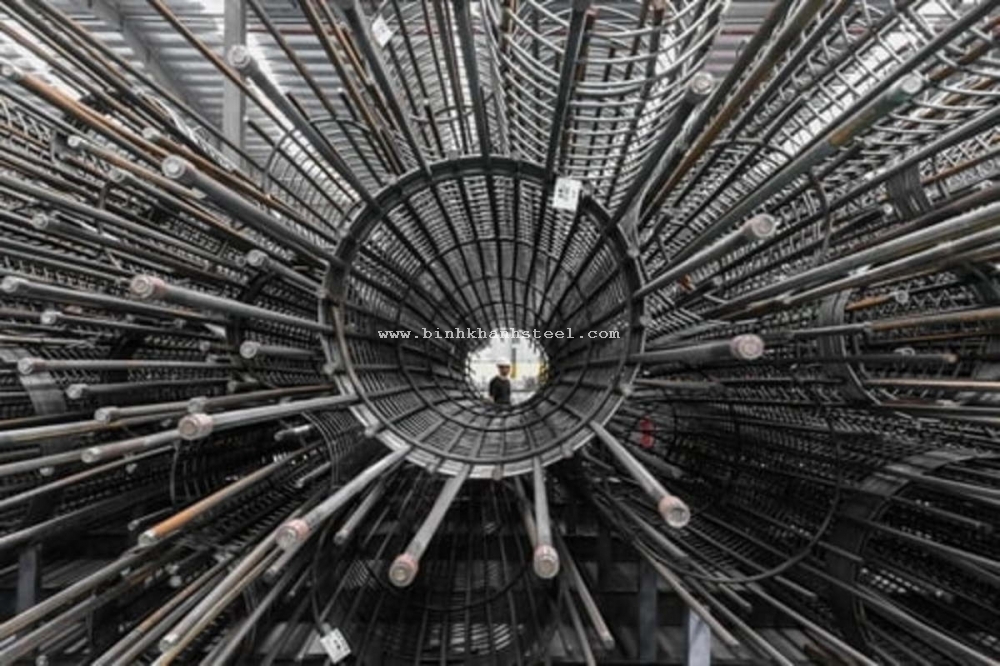


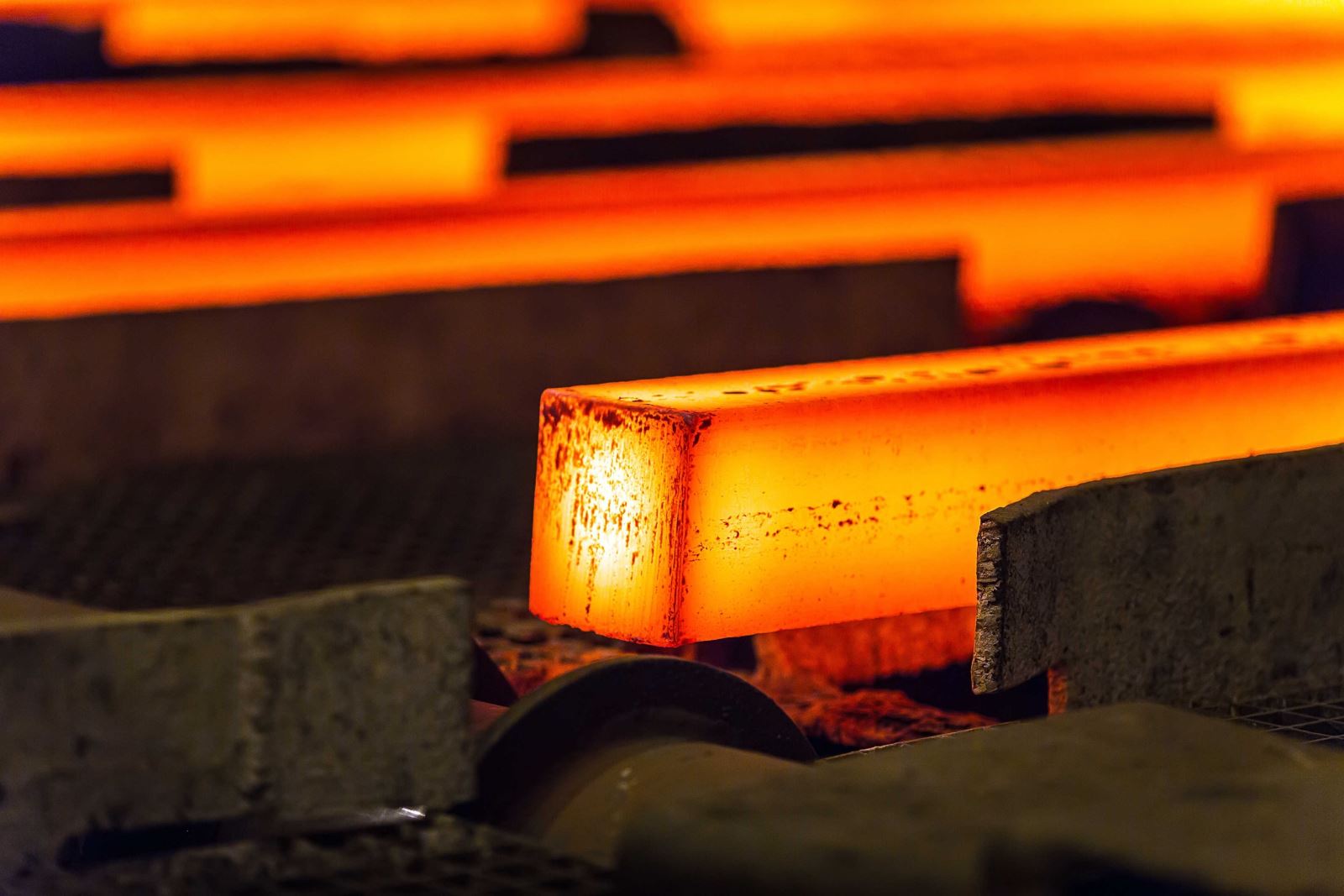
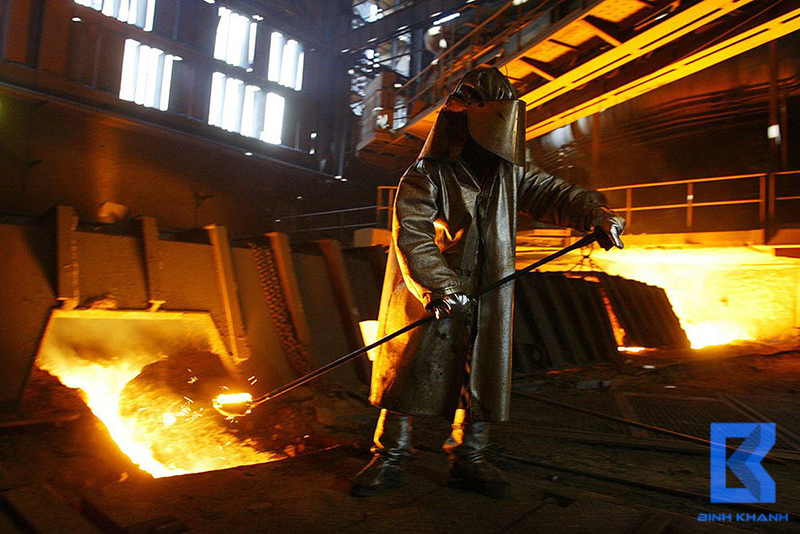

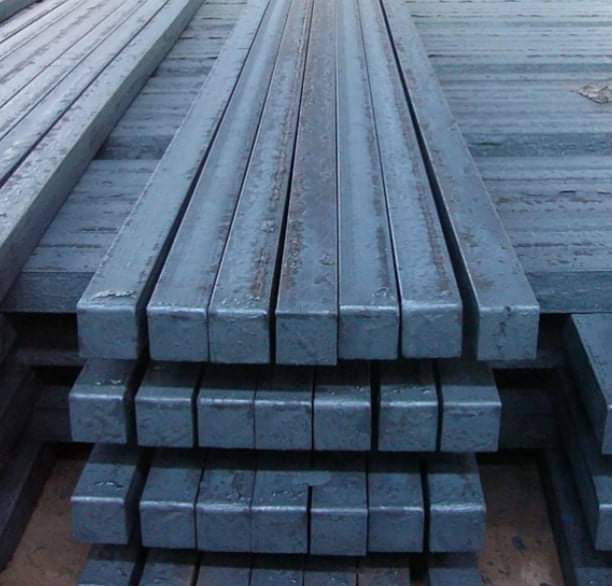

w300.jpg)
